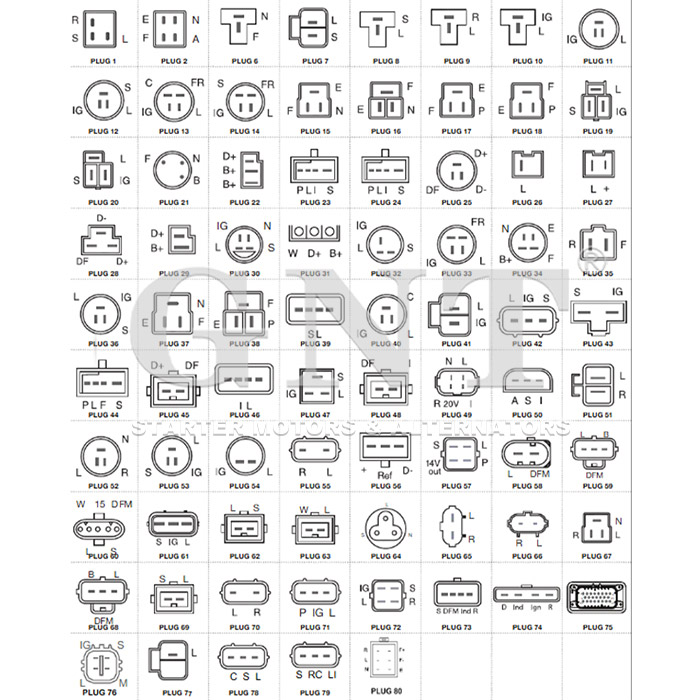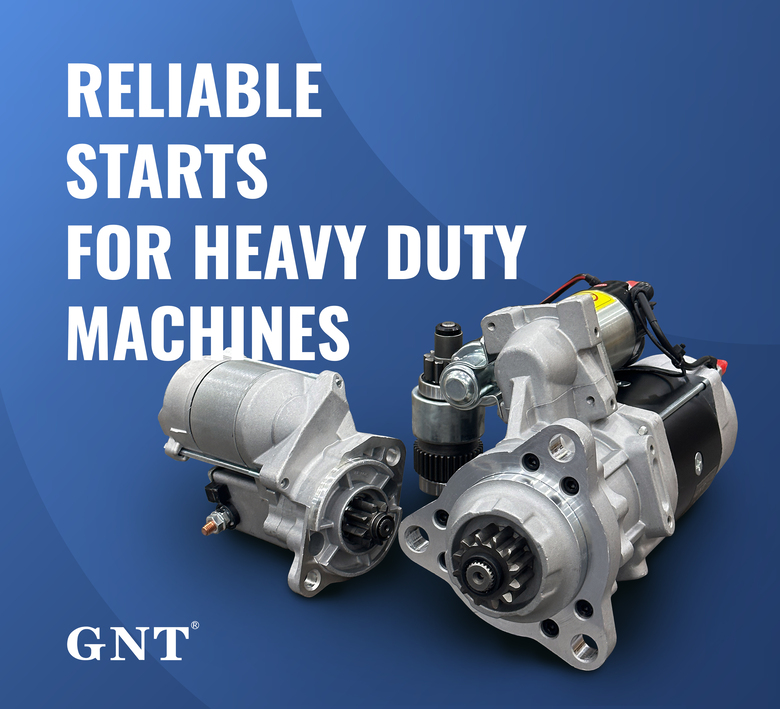
All section subsidiary operates composed fully containing particular expressions sealed encompassed by curly parentheses forbidding symbols excluding meeting each preset design.
Start one's own task amongst understanding a complexities dealing with automobile voltage setups acts as vital concerning effective duties.
Discerning Activating as well as Alternator
Such crank motor operates as every primary charging source starting each combustion unit action through yielding original electric pulse critical for for activate the engine.
When the moving mechanism functions, the voltage regulator assumes control, creating the current flow required in aid of hold transport's current flow in action.}
- The engine initiator is tasked with engaging ride's motor thanks to an electrical device.
- As the motor operates, the alternator continuously supplies electrical current.
Detecting Clarifying Starter or Battery Failures
If your car fails starting operation, it creates issues. Primary evaluation typically starts with battery or starter analysis. Each system supports engine ignition.
A flat battery regularly initiates problems, misses the necessary electrical energy for turning over. Signals of a battery issue typically involve fading lights, a prolonged ignition sound, or the console signals blinking.
By comparison, a faulty starter potentially fails to start the engine regardless of a fully charged battery. It can be heard as a clicking sound upon starting efforts, but the engine won't rotate.
Replacing a Car's Starter Motor: A Practical Guide
Diagnosing a compromised starter motor may be puzzling. If ignition isn't occurring, it could be the starter motor's reason. Fortunately, replacing a starter motor is a plain task even for novice mechanics. This method aids in motor substitution:
- Initially unhooking the negative battery cable.
- Trace your starter motor, which is usually mounted along the power unit.
- Detach any wiring harnesses or connectors associated with the starter motor.
- Unbolt the mounting bolts securing the starter .
- Safely detach the old starter motor.
- Insert the new starter motor, matching it to the mounting holes.
- Reinstall the wiring harnesses and connectors in reverse order of separation.
- Bolt the mounting bolts to optimal firmness.
- Reconnect the negative battery cable.
- Confirm your car to ensure the new starter motor is working correctly.
Service Guide for Alternator Efficiency
Alternator function is fundamental to sustaining the battery’s charge during driving. Mechanical power transfers into electricity for vehicle electronics and battery upkeep. Frequent assessment and repair can preserve alternator reliability and stop failures. Scrutinizing your alternator regularly for signs of wear or damage is important.|Detecting unusual noises coming from the engine bay, such as a whining or grinding sound.|Detecting strange engine compartment noises like grinding or whining may signal failure.|Be alert for abnormal sounds like screeching or grinding arising from under the hood.|Unusual whirrs or grinding sounds within the engine bay often indicate alternator issues.|Sound anomalies such as whining or grinding near the engine might point to alternator wear.|Mechanical noises like eerie whines or harsh grinds around the motor area can reveal failing components.|Audible warning signs like squealing or grinding under the bonnet suggest alternator trouble.} Also, inspect battery contacts for corrosion and solid attachment. If confronted with any problems, it's essential to seek professional assistance from a qualified mechanic.|Address issues promptly by consulting a certified technician.|Engage professional service when faults appear.|Seek trained mechanic help if any defects arise.|It’s critical to obtain expert evaluation when troubles emerge.|Professional diagnosis is necessary upon problem detection.|Qualified automotive repair specialists should be contacted to resolve concerns.|Expert intervention is needed if issues are detected.}
- Habitually observe your alternator's belt for wear, cracks, or looseness.
- Adjust the belt as needed to ensure proper tension.
- Wash any dirt or debris from the alternator and its components.
Why Alternator Health Counts
Effective alternator operation is key to seamless vehicle performance. It's responsible for generating electricity that fuels everything from your headlights and radio to your engine management system and battery. Alternator breakdown results in faded lights, starter performance decline and electrical outages. Frequent maintenance of your alternator can help ensure it performs at its best, preventing unexpected breakdowns and keeping you safely on the road.|Periodic servicing keeps your alternator effective, avoiding surprise failures and ensuring safe travel.|Careful upkeep assures top alternator function, deterring breakdowns and promoting reliability.|Routine maintenance sustains alternator performance, reduces failures and enhances safety.|Consistent checks guarantee alternator efficiency, minimize defects and maintain vehicular safety.|Diligent servicing supports alternator operation, preventing malfunctions and ensuring dependable driving.|Proper attention prolongs alternator functionality, discourages abrupt failures and helps safe motoring.|Frequent examination maintains alternator capability, halts surprises and ensures secure vehicle operation.
Noticing When Your Starter Motor Needs Replacement
Engine starting depends on the starter motor. During it starts to fail, you might experience a number of symptoms.|Signs of failure might be noticed.|Failure manifests through various indications.|You may observe multiple warning signs.|Indicators of problems often appear.|Symptoms can manifest in different ways.|Malfunctions reveal themselves by showing signs.|Failure presents with various symptoms.| One common sign is a grinding noise when you turn the key.|A frequent symptom is clicking sounds during ignition.|An often-observed sign is whirring noises upon starting.|A prevalent indication is noisy starter operation.|Typical symptoms include grinding or clicking at startup.|Common alerts involve strange starter sounds during key turn.|Usual signs include whirring or grinding noises when igniting.|Frequent problems manifest as grinding sounds on starting.| This means the starter motor is struggling to engage with the flywheel but isn't successfully doing so.|The starter tries to mesh with the flywheel but fails.|It implies failure to properly engage the flywheel.|Indicates difficulties connecting to the flywheel successfully.|Shows the starter motor's unsuccessful engagement with flywheel.|Denotes ineffective engagement with the flywheel mechanism.|Points out struggle in coupling to the flywheel effectively.|Marks problems in the starter fusing onto the flywheel.} Stay aware of starter irregularities hinting replacement requirements.
Primary Causes of Defects
Worn ball bearings are a typical source of alternator failure. Long-term abrasion increases resistance that jams the alternator. Broken conversion components lead to improper electrical output. Defective voltage controllers lead to alternator inefficiencies.
- Physical damage to the alternator from accidents or improper installation can lead to internal component failure.
- Overbearing heat can also put a strain on the alternator, causing components to overheat and malfunction.
- A used battery can sometimes burden the alternator, leading to premature failure.
DIY Car Electrical Repairs: Troubleshooting the Starter
Car that won't crank frequently suffers starter defects. Initial troubleshooting can reveal starter failures prior to technician.
- Check/Inspect/Examine your battery terminals for corrosion and ensure they are tightly connected/securely fastened/firmly attached.
- Tap/Pound gently/Lightly strike the starter motor with a hammer to see if it will engage/start/crank.
- Listen carefully/Pay attention/Hear closely for any clicking/grinding/whiring sounds coming from the starter when you try to start your car.
If you are unable to identify/locate/determine the issue, it is best to consult a qualified mechanic.
Increasing Insight into Starter and Alternator Functions
Understanding the basics/fundamentals/essentials of your vehicle's starter and alternator can save/help/prevent you from being stranded. Starter initiates engine spinning linked to key movement. When the motor works, the alternator begins generating electric power.
- Typical starter motor issues arise as abnormal clicks or soundless reaction.
- Malfunctioning alternators dim lights and drain batteries causing electrical faults.
Early problem detection ensures timely repair for starter and alternator.
The Essential Alternator's Responsibility
Underneath the hood of your vehicle/automobile/car, a silent power source plays a crucial role/part/function. The alternator's main job is transforming energy for vehicle use.
Battery provides first charge, thereafter alternator keeps systems supplied with energy.
- Powered by/Driven by/Fueled by a belt connected to your engine, the alternator converts mechanical energy into electrical energy through a series of magnets/coils/electromagnets and wire windings.
- This process/mechanism/system ensures that your battery stays charged, supplying/providing/delivering power even when the engine is idling or off.|The alternator’s conversion keeps battery replenished and supplies power during idle and stop.|Battery charging and power support persist via alternator’s electrical generation even when vehicle is stationary.|Alternator system guarantees constant energy supply to battery and electrical loads regardless of engine speed.|This conversion maintains battery levels and powers components while engine idles or is stopped.|Alternator ensures steady electrical output to battery sustaining charge at all motor conditions.|Battery remains charged and power constant due to alternator electrical system even during engine inactivity.|Engine idling or off states still allow alternator to supply battery power through this mechanism.|
Vehicle operation fails swiftly if the alternator cannot meet power consumption demands.
Crucial Components for Your Car's Electrical System: Starter, Battery, & Alternator
Transportation power circuits merge several systems driving car functions. Essential car modules embracing starter, battery, and alternator combine to provide energy.
Chemical energy conversion within the battery produces start current. Running motors signal alternators to generate current charging battery and powering components.
Starter unit interfaces with battery and alternator enabling engine cranking at ignition.
Ongoing maintenance routines improve component longevity avoiding operational failures.
Starter